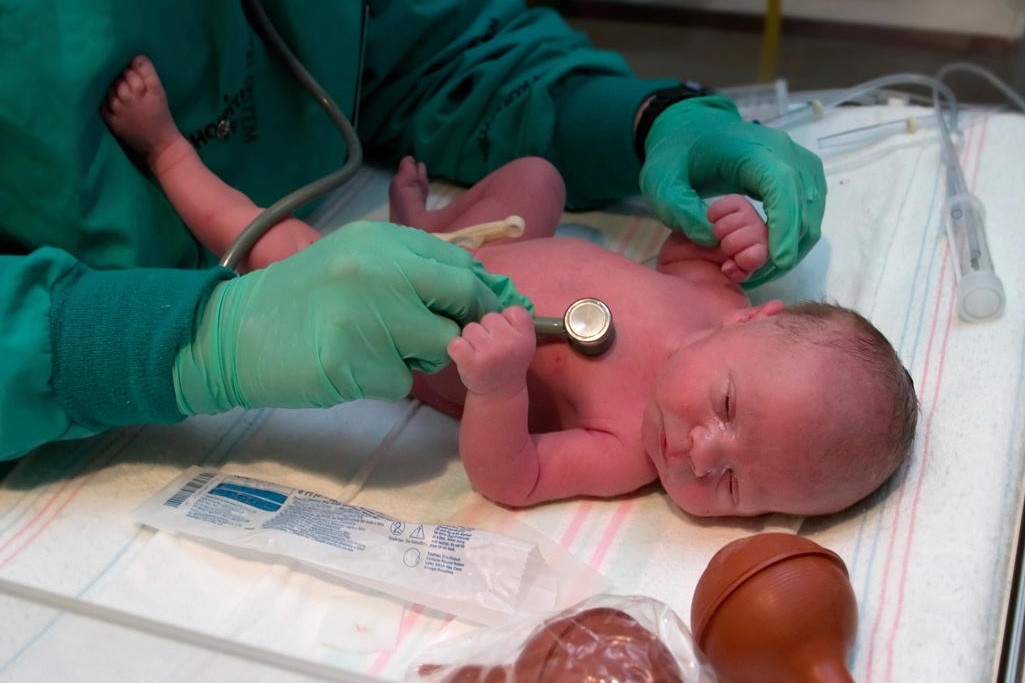
Neonatal hypoglycemia: causes, risks and treatment
Newly delivered humans have a higher risk of hypoglycemia because they are burning a lot of glucose as newly independent beings; also, they frequently have insufficient stores, since the maternal-fetal “spoon fed” supply of glucose is abruptly cut off with interruption of the umbilical cord
Therefore, during the normal transition to extrauterine life (at delivery), blood glucose concentration in the healthy term newborn falls during the first two hours after delivery, but usually goes no lower than 40 mg/dL.
CHILD HEALTH: LEARN MORE ABOUT MEDICHILD BY VISITING THE BOOTH AT EMERGENCY EXPO
It is important to differentiate this normal physiologic transitional response from abnormal disorders that result in persistent or recurrent hypoglycemia that cause neurologic damage.
Causes of Neonatal Hypoglycemia
The causes of neonatal hypoglycemia fall into two categories:
DIMINISHED GLUCOSE SUPPLY:
- inadequate glycogen stores, as in preterm infants;
- impaired glucose production, as with endocrine and metabolic disorders;
- fetal growth restriction from placental problems resulting in small-for-gestational-age (SGA) newborns.
INCREASED GLUCOSE UTILIZATION:
- hyperinsulinism.
This is seen in neonates born of diabetic mothers, long used to hyperglycemia caused by their mother’s high blood sugar. The neonate’s higher insulin levels (maintained before birth to handle the increased load) are still there to act against the suddenly normal (and lower!) glucose levels after separation from the mother.
The result: higher insulin levels overact on less glucose than what the baby was used to handling. The blood glucose crashes.
How Much Hypoglycemia Is Too Much Hypoglycemia?
Although clinically significant neonatal hypoglycemia cannot be defined by some exact blood glucose number, for purposes of management strategies in the field, neonatal blood glucose should be > 70-80mg/dL, and a blood glucose < 40-45 mg/dL indicates hypoglycemia.
(Again, as above, this must be differentiated from the normal transient hypoglycemia seen in the transition to extrauterine life.)
Neonatal blood sugar should be checked with all newborns and if glucose readings are found to be < 70-80mg/dL, re-evaluations of the blood glucose should be performed every 30 minutes to 1 hour.
Risk for Hypoglycemia
- SGA (small-for-gestational-age);
- LGA (large-for-gestational-age);
- prematurity (<37 weeks gestation);
- infants of diabetic mothers;
- infants with perinatal stress, such as with birth asphyxia, pre-eclampsia, meconium aspiration syndrome; and
- maternal hypertension in the mother
If you are attending an infant that is LGA (> 4 kg/8.8 lbs.), you should assume the mother is diabetic and obtain a blood glucose on the neonate.
There is no downside to this assumption and your reaction (getting a blood glucose)!
Signs and Symptoms of Hypoglycemia
Hypoglycemic neonates exhibit:
- jitteriness/tremors;
- sweating;
- irritability;
- tachypnea (rapid breathing);
- pallor or pale complexion;
- poor suck or feeding;
- weak or high-pitched cry;
- hypotonia (limp or lethargic);
- seizures;
- apnea, bradycardia, cyanosis;
- hypothermia.
When considering the above list, it is evident that there is considerable crossover between it and symptoms of hypothermia, hypoxia, bradycardia, and neonatal fever.
The bottom line always falls back onto the ABCs along with minimizing neonatal temperature loss:
►ABCs + Temp Maintenance.
Treatment of Neonatal Hypoglycemia
Treatment for neonatal hypoglycemia includes
- supporting the airway, breathing and circulatory function (the “ABCs”).
Also,
- glucose (D10 is the correct concentration of the drug for reversing hypoglycemia in neonates), which is established with a blood glucose of 40-45 mg/dL.
It shouldn’t be given routinely (that is, without a blood sugar determination), in case the diagnosis is incorrect, risking HYPERglycemia.
♦ DOSE: 0.5 to 1 g/kg of glucose: 2 to 2.5 mL/kg of 10% dextrose solution.
Higher concentrations can cause local tissue damage if it extravasates. It should be administered slowly at 2-3 ml/min. Giving it slowly will help avoid creating the swing to hyperglycemia, which then can cause a rebound hypoglycemia, defeating its whole purpose.
The alternatives below provide 0.5 to 1 g/kg of glucose:
- 5-10 mL/kg D10W
- Bolus of 10-20 mL/kg of D5NS or D5RL
Warm IV fluids may assist in rewarming
Environmental conditions should be kept between 24-26.5°C (75-78°F), but in the case of hypothermia, as close to the desired core temperature as possible.
The transport facility should be equipped to handle high-risk newborns.
Read Also:
Emergency Live Even More…Live: Download The New Free App Of Your Newspaper For IOS And Android
Emergency-Urgency Interventions: Management Of Labor Complications
What Is Transient Tachypnoea Of The Newborn, Or Neonatal Wet Lung Syndrome?
Tachypnoea: Meaning And Pathologies Associated With Increased Frequency Of Respiratory Acts
Postpartum Depression: How To Recognise The First Symptoms And Overcome It
Postpartum Psychosis: Knowing It To Know How To Deal With It
Childbirth And Emergency: Postpartum Complications
European Resuscitation Council (ERC), The 2021 Guidelines: BLS – Basic Life Support
Pre-Hospital Seizure Management In Paediatric Patients: Guidelines Using GRADE Methodology / PDF
New Epilepsy Warning Device Could Save Thousands Of Lives
Understanding Seizures And Epilepsy
First Aid And Epilepsy: How To Recognise A Seizure And Help A Patient
Childhood Epilepsy: How To Deal With Your Child?
Epileptic Seizures: How To Recognise Them And What To Do
Seizures In The Neonate: An Emergency That Needs To Be Addressed


